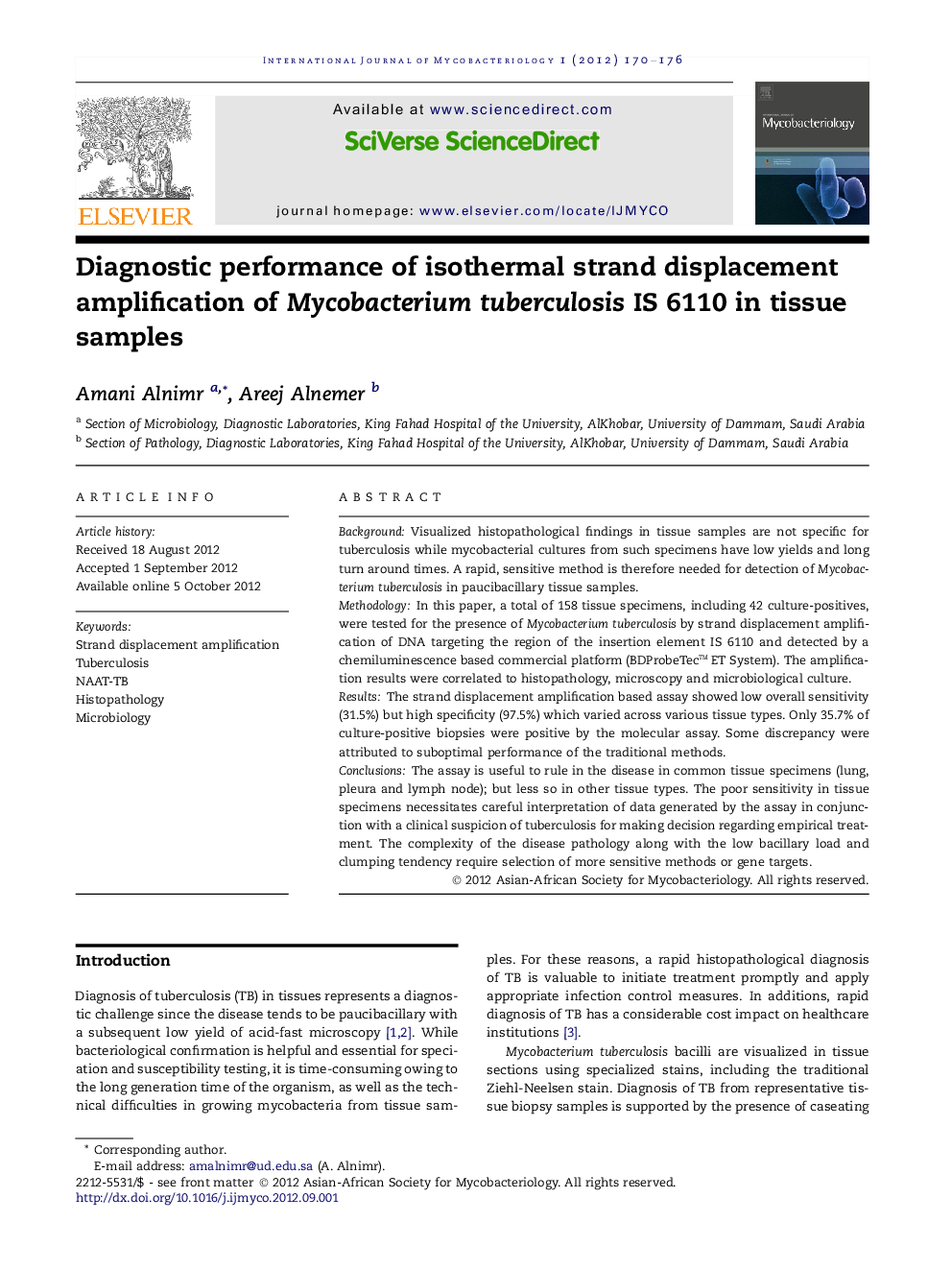| Article ID | Journal | Published Year | Pages | File Type |
|---|---|---|---|---|
| 3405215 | International Journal of Mycobacteriology | 2012 | 7 Pages |
BackgroundVisualized histopathological findings in tissue samples are not specific for tuberculosis while mycobacterial cultures from such specimens have low yields and long turn around times. A rapid, sensitive method is therefore needed for detection of Mycobacterium tuberculosis in paucibacillary tissue samples.MethodologyIn this paper, a total of 158 tissue specimens, including 42 culture-positives, were tested for the presence of Mycobacterium tuberculosis by strand displacement amplification of DNA targeting the region of the insertion element IS 6110 and detected by a chemiluminescence based commercial platform (BDProbeTec™ ET System). The amplification results were correlated to histopathology, microscopy and microbiological culture.ResultsThe strand displacement amplification based assay showed low overall sensitivity (31.5%) but high specificity (97.5%) which varied across various tissue types. Only 35.7% of culture-positive biopsies were positive by the molecular assay. Some discrepancy were attributed to suboptimal performance of the traditional methods.ConclusionsThe assay is useful to rule in the disease in common tissue specimens (lung, pleura and lymph node); but less so in other tissue types. The poor sensitivity in tissue specimens necessitates careful interpretation of data generated by the assay in conjunction with a clinical suspicion of tuberculosis for making decision regarding empirical treatment. The complexity of the disease pathology along with the low bacillary load and clumping tendency require selection of more sensitive methods or gene targets.
